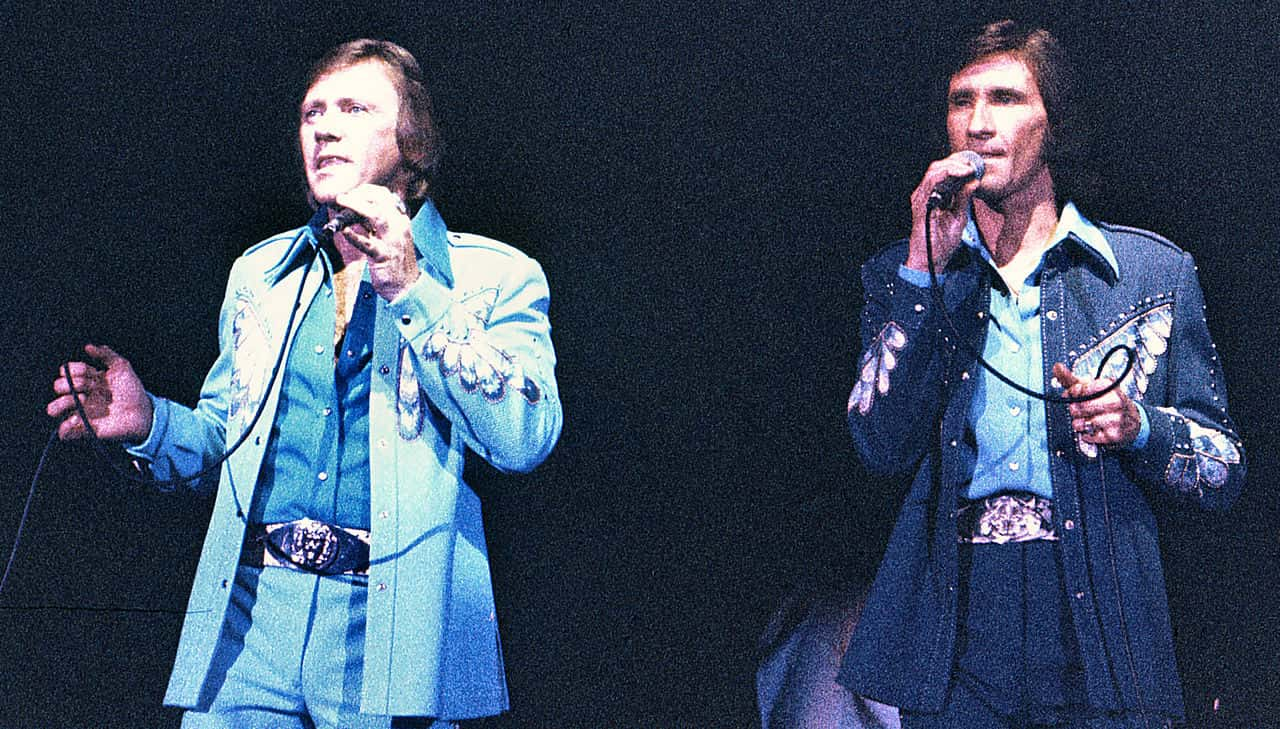The 20th century was a mere hundred years, but this time period saw the hugest jump in human progress yet—and a fair share of tragedies, triumphs, surprises, and scandals along the way. Here are some such events, and some of the more random and quirky happenings that you might have missed in history class. It’s a weird and wonderful world, and there’s always more occurring than meets the eye.
24. An Important Discovery
In the late 1940s, young Bedouin shepherds on the West Bank by the Salt Sea were having a normal day guiding and tending to their flocks. After throwing a rock and hearing something shatter, the teenagers discovered some clay jars in a cave that contained the long-lost Salt Sea Scrolls with 2,000-year-old Biblical manuscripts. Some of them were sold, and some are mere fragments, but it has been called one of the greatest discoveries of the 20th Century.

23. Einstein for Prez!
Albert Einstein is one of the most celebrated figures of the 20th Century for his contributions to science, but some figures wanted to get him into more of a leadership role. Einstein was offered the role of President of Israel to guide the nation in its infancy to be a strong, successful nation. Although he turned the position down (in part because he feared that he did not have strong enough interpersonal skills), Einstein remained closely aligned with Israel throughout his lifetime.
22. A Day That Was Just a Day
The 20th Century contained endless scandals, skirmishes, surprises, and sass, but it also had its off-days. April 11th, 1954, to be specific, is classified as the most boring day of the century due to its lack of births, deaths, or significant events. Scientist William Tunstall-Pedoe used his own search engine True Knowledge to find this day on which nothing of real significance occurred; it happened to be a Sunday.
21. Human Zoos Are All the Rage
History is full of despicable acts of prejudice, but human exhibitions in zoos are on a level all their own. In 1906, the Bronx Zoo in New York City had an exhibit featuring Ota Benga, a “Bushman” from an unknown location in Africa who was kept in a monkey cage and forced to perform. A quarter of a million Americans came to observe. In 1916, Benga had enough of the Zoo and took his own life.
 Columbus Metropolitan Library, Wikimedia Commons
Columbus Metropolitan Library, Wikimedia Commons
20. Some People Didn’t Get the Memo
When WWII ended in 1945, the streets of countries all around the world filled with people celebrating the end of a long and bloody conflict. However, some were not so informed of this development. Japanese soldier Hiroo Onoda was convinced that the conflict was still ongoing, and hid out on an island in the Philippines until 1974.
19. A Big Ship Hit Something Bigger
In an analogy worthy of F. Scott Fitzgerald, men built a ship meant to represent the pinnacle of human achievement, a floating celebration of luxury, power, size, and the proper organization of classes—and then it sank on its maiden voyage. Society was never the same after the Titanic sank in 1912; the dramatic scale of the tragedy and the cruel hierarchy of which classes had access to the lifeboats led to social reform and mass changes to the safety laws of ships.
18. Things Became More Black and White
Imagine traveling back in time to 1912 and going out for tea, then seeing impeccably-dressed ladies and gentlemen chowing down on…Oreos? That’s right, the famous eat-the-middle-first cookie was invented that year by the Nabisco Company, and it looked almost exactly like they look today. In 1975, the company then blessed the world with the glory of Double-Stuffed Oreos—what a time to be alive.
17. Pluto’s Time to Shine
Up until the 20th Century, we humans only knew of the existence of seven planets neighboring Earth. Then in 1930, along came Pluto! A mere assistant at the Lowell Observatory, Clyde W. Tombaugh found international fame as the person who finally nailed down the location of the mysterious planet that had been hiding from astronomers for years. Although Pluto was downgraded to “dwarf planet” status in 2006, many still think of it as an integral part of our solar system—and of all the acronyms students created in school to remember the order of the planets.
16. The Man Who Would Be King
We all see the tabloid magazines in grocery stores covered in pictures of the modern Royal Family of England, an institution that seems rock-solid in its traditions and hierarchy. However, in 1936 the legitimacy of the entire family came into question when Edward VIII chose love over duty and sacrificed his role as King in order to marry Wallis Simpson, an American divorcee. In a country still recovering from WWI, Edward’s choice was met with mixed reactions—but his niece Elizabeth II eventually became perhaps the most popular ruler of all time.
15. They Fly Through the Air with the Greatest of Ease
For a brief time in history, blimps were used as part of commercial travel and were thought to have a major future in aviation—they were also thought of as very fashionable since the upper-class jet-set used them frequently. In 1937, however, people’s perception of airships changed forever when the Hindenburg Disaster occurred. While trying to land in New Jersey after traveling from Europe, the Hindenburg suddenly caught fire, and after almost half a minute, the entire vessel was engulfed in flames. Out of 36 passengers and 61 crew members onboard, 35 were liquidated in the disaster, and blimp travel rapidly declined from that day.
 Associated Press, Wikimedia Commons
Associated Press, Wikimedia Commons
14. Do the Hustle
The '60s was a decade dominated by rock and roll, but in the '70s an entirely new genre of music found popularity: Disco! Disco played primarily in clubs and was designed especially for dancing, which was not true of rock and roll. It was a new idea to have music written for clubs, a practice that has prevailed to the present day with genres like EDM and house music. Although Disco entered the mainstream and became extremely popular, many mocked it as lightweight and unserious.
13. Women Leaning on
The 20th Century was a time of struggle for women of all classes and races, as they fought for the right to live, work, and exist on an equal playing field as men. Time magazine compiled a list of the “25 Most Powerful Women of the 20th Century” with some interesting choices. Rosa Parks, Hillary Clinton, Mother Theresa, Julia Child, and Marie Curie made the cut, and some notable exclusions to the list include Queen Elizabeth and philanthropist Melinda Gates.
12. Hey Mr. DJ
No one can deny that the 20th Century was a revolutionary time for music, with iconic bands popping up every decade, new genres appearing, and great artists collaborating to make sweet music together. People can argue forever about which pieces are the “best” until the end of time, but which ones received the most airplay? BMI figured it out for the USA, resulting in a top 10 list that includes artists like The Beatles and Otis Redding, but the number one spot went to "You’ve Lost that Loving Feeling,” originally performed by The Righteous Brothers, with 8 million plays on American radio.
11. Ended on Home Plate
When it comes to the risk of injury in sports, the usual culprits are contact sports like football or hockey. In 1920, however, baseball suddenly became a downright murderous sport. During a game between the Cleveland Indians and the New York Yankees, Yanks pitcher Carl Mays threw a pitch with a dirtied ball, hitting the left temple of Ray Chapman; the ball connected with such a crack that Mays assumed it was the sound of the bat hitting his pitch. Chapman lost consciousness and never awoke, a tragedy that led to “spitballs”—scuffed-up or altered baseballs—becoming unpermitted, but not, oddly enough, to the introduction of batting helmets (that happened decades later).
10. Elmo Mania
There was something about the late 20th Century—especially the '90s—that really caused the phenomenon of “must-have” toys for the holiday season to gain momentum. Beanie Babies, Tamagotchis, and Furbies all had their cultural moment, but nothing could compare to 1996 when a certain Sesame Street character got his own jubilant toy called the “Tickle-Me-Elmo.” After a marketing blitz led by Rosie O’Donnell, massive crowds flooded stores, jets flew from China full of dolls to stock the stores, and several employees were injured by customers' desperation to snag one of the giggling Elmo dolls.
9. Less-than Iconic Couples
Now that we’re deep into the 2000s, it can be fun to take a look back at the weird romantic pairings of the '90s. Justin Timberlake and Fergie had a brief dalliance in 1996, and Tobey Maguire dated Rashida Jones for three years before he became Spiderman. Going back even further is the most mind-blowing coupling of all time: Cher and Tom Cruise dated throughout 1987, but unfortunately did not make it to the altar.
8. Hot Wheels
In a move that predated Heelie shoes, in the early 20th Century a man named Constantini tried his hand at inventing a form of motorized roller skates. Each skate possessed a 1.5 horsepower engine, and the user was supposed to wear a belt that contained about a gallon of fuel for propulsion. Although Constantini’s prototypes never amounted to anything, it’s fun to imagine how the skates might’ve been used throughout recent history if they went into mass production.
7. The Idiot Box Comes Forth
Want to feel like an underachiever? American Philo Farnsworth broadcasted the first televised images at age 21. The image he managed to transmit on this historic occasion was the sign for the American dollar.
6. Not a Rush Job
One of the biggest artistic undertakings of the 20th Century is the Mount Rushmore monument in South Dakota. Unfortunately, the mountain was a site of great spiritual significance to the indigenous peoples of the area, the Lakota, who had ownership over the land since a treaty was signed in 1868. The US government ignored the Lakota’s protests and went ahead with the carving, which ultimately took from 1927 to 1941 to complete.
5. Faster than planned
In 1989, the fall of the Berlin Wall was a sign of hope to people around the world, and images of the people of both East and West Berlin coming together over the rubble of the Wall instantly became iconic. However, the Wall was not supposed to come down at the moment that it did; German official Gunter Schabowski announced mistakenly that the travel ban would end “without delay” and a mob of East Germans arrived at the gate, where a flustered guard let the open passage begin.
4. People Cleaned Their Act Up
Many people daydream about what it would be like to talk to their ancestors, but if that situation ever arose you probably wouldn’t want to smell them. Daily (or even weekly) washing of the body did not become a social necessity until about halfway through the 20th century when advertising companies began persuading the public to buy soap, deodorant, shampoos, etc. by implying that “clean” people are more popular and successful.
3. The Source of Madness Is…Purple?
For centuries, the color purple was the shade of choice for the rich and royal because of the expensive dye needed to create it—but did you know that for a time, purple was considered dangerous to the brain? In 1903, a news story ran in the Boston Globe newspaper claiming that purple was the most dangerous color of all because it could over-strain the brain, overexcite people, and ultimately drive them mad if there was too much exposure.
 Public Domain Pictures
Public Domain Pictures
2. Girls Go Wild for Coke
Moral standards were quite high for girls and women in early 20th-century society, where there were numerous rules having to do with appearance, behavior, and what books were acceptable for the female brain. However, things reached a bizarre height in 1911 when the US Food and Drug Administration confiscated 40 barrels of Coca-Cola in order to keep it from girls in college, out of fear that all that sugar and caffeine would cause “wild nocturnal freaks, brake of college rules and female proprieties, and even immoralities.”
1. Someone Almost Pushed the Button
It’s pretty amazing that humanity has made it into the 21st century considering the near-misses of the previous century. While the world watched the Soviet Union and the United States duke it out during the Cuban Missile Crisis, they didn’t know just how close they came to destruction. A Russian submarine was deep underwater in the Caribbean when the USA started dropping mostly harmless depth charges in the water around Cuba. The crew, believing that WW3 had begun, argued whether they should launch the nuclear torpedo that they had on board, and came close to a unanimous vote to launch—thankfully, Senior Officer Vasili Arkhipov cast the one vote needed to stop the impending destruction.
Sources: 1, 2, 3, 4, 5, 6, 7, 8, 9, 10, 11, 12, 13, 14, 15, 16, 17, 18, 19, 20, 21, 22, 23, 24



























